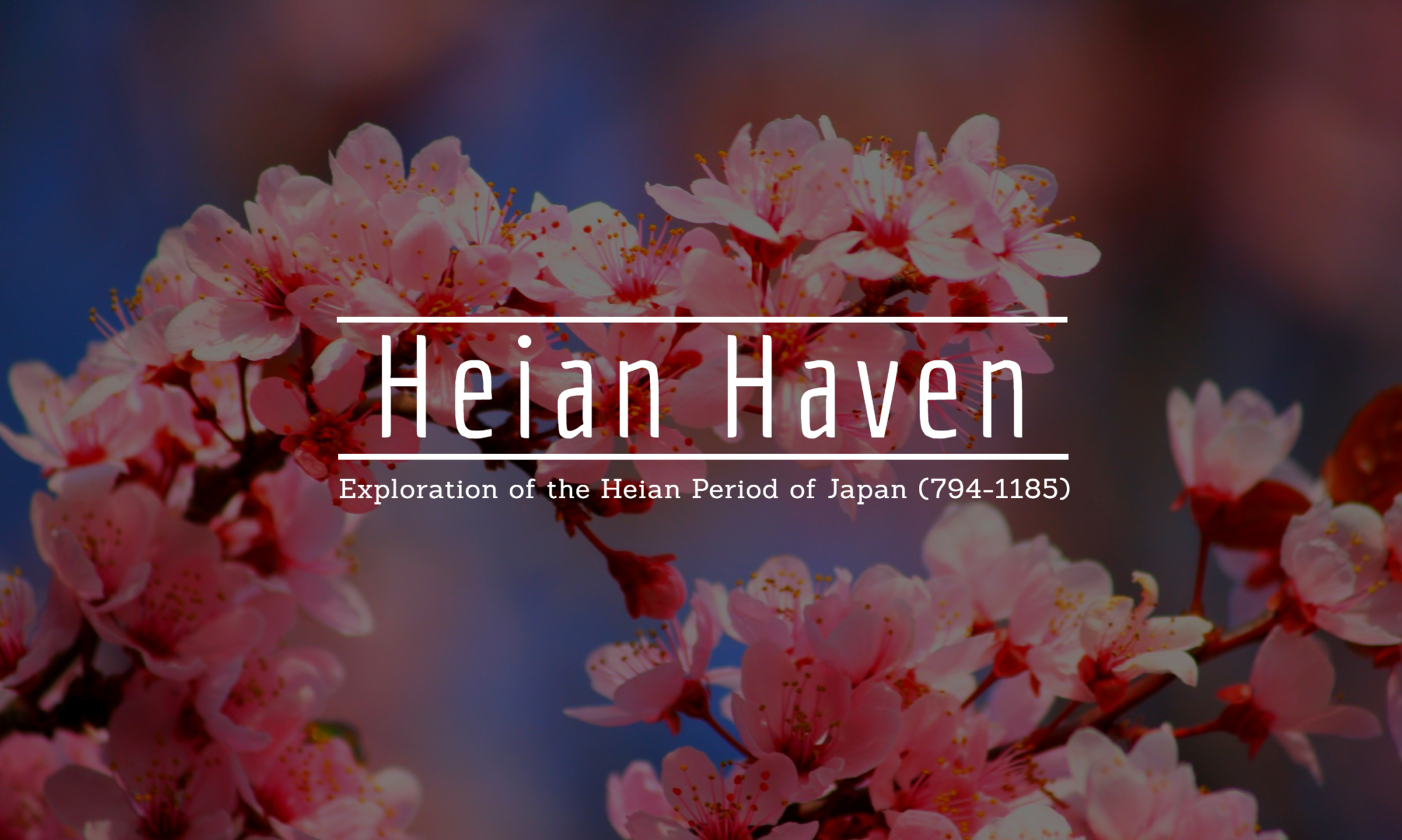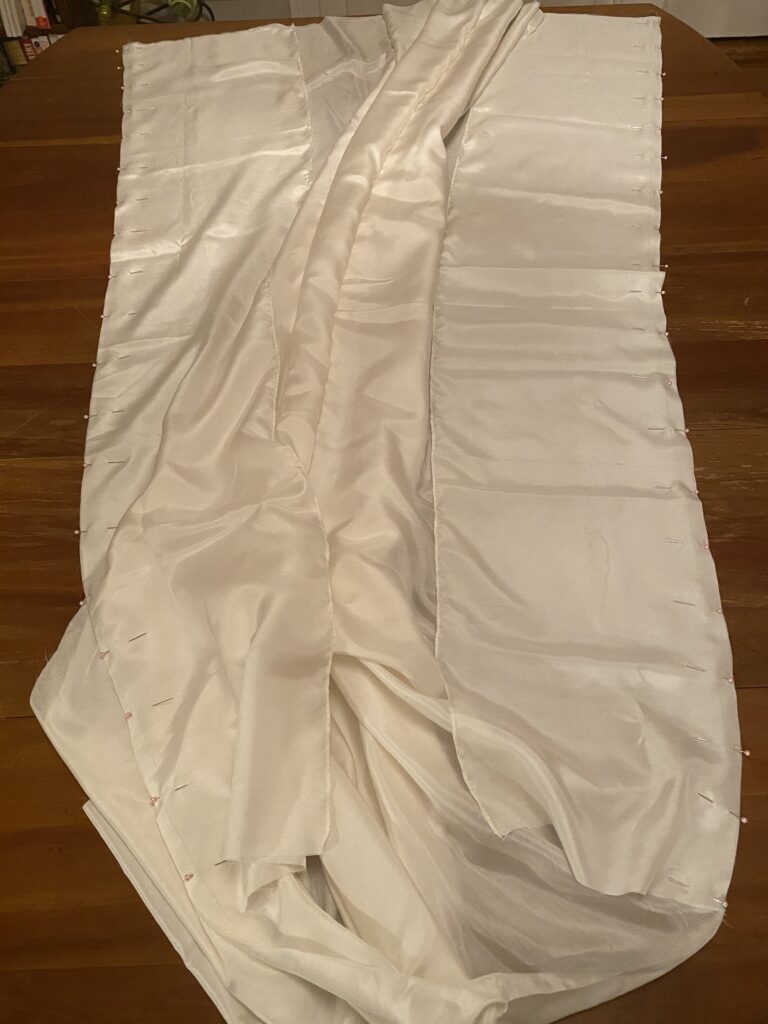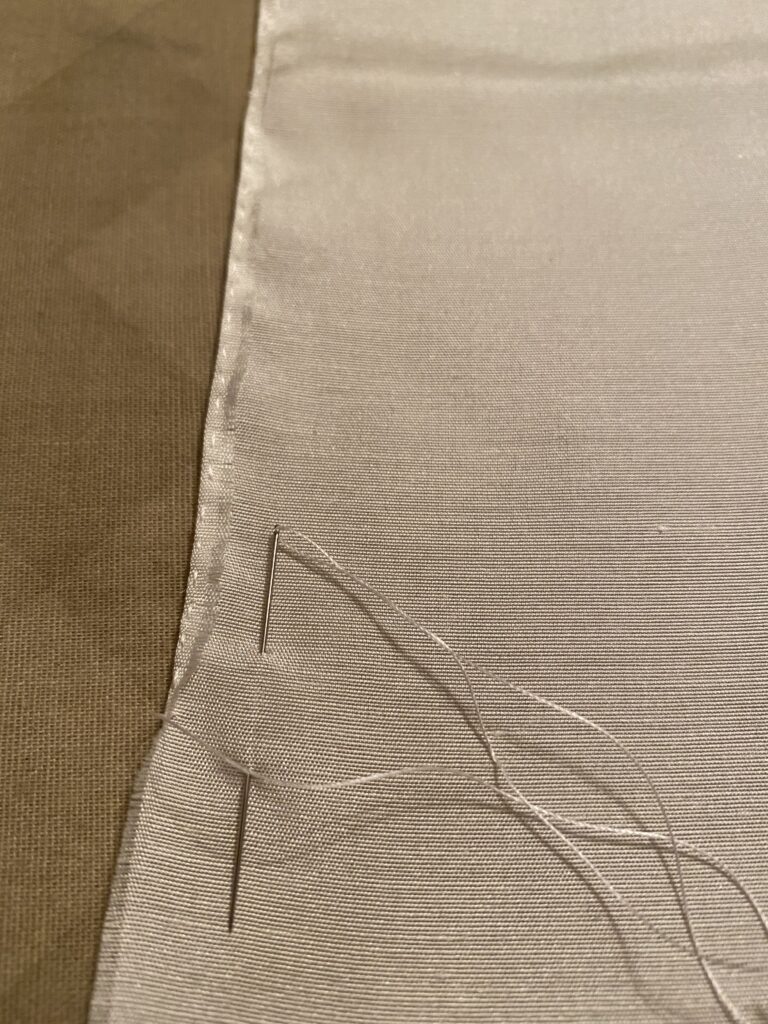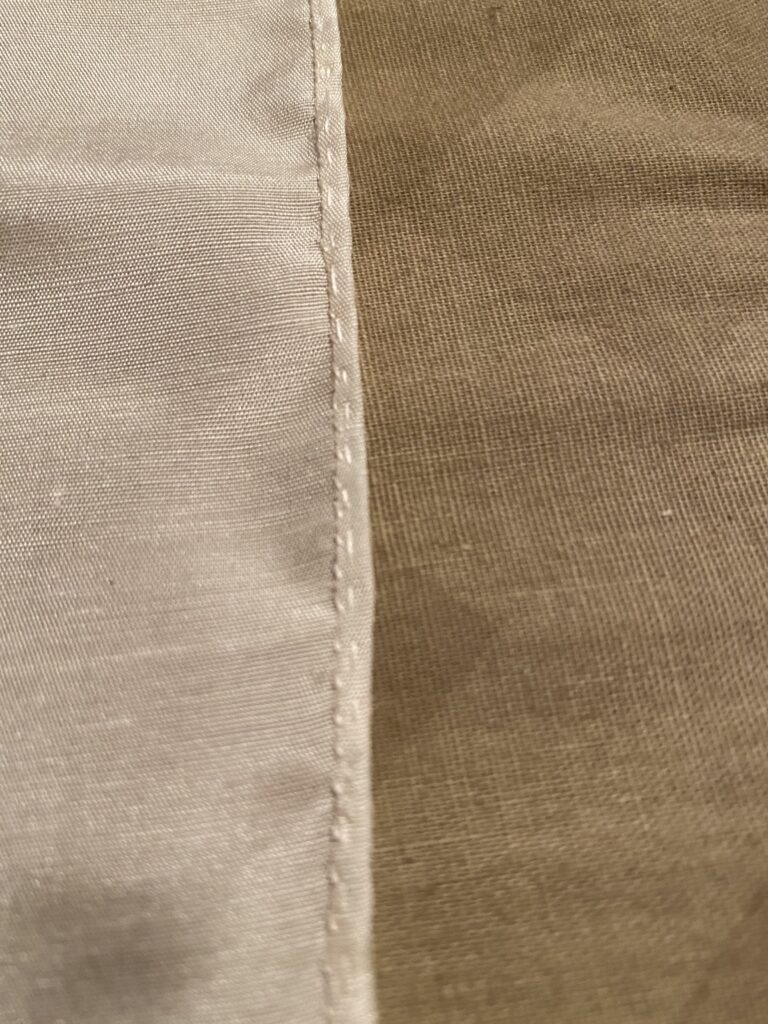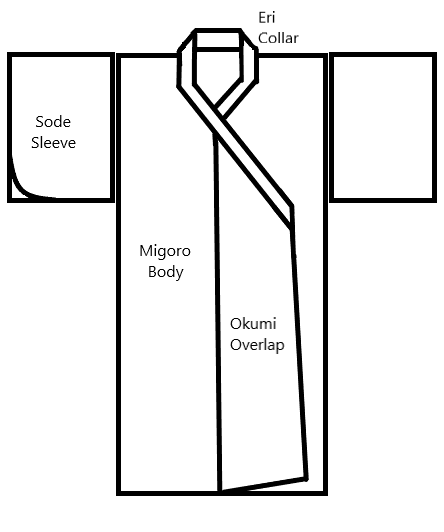It’s sleeve day!
First thing is to decide on the final size of the sode, sleeves. I’ve looked through the patterns that I’m referencing again, and it didn’t help. Well, it helped, I just wasn’t presented with an easy answer.
The men’s hitoe is too big. The other men’s garment has a completely different style of sleeve. The women’s hitoe has 74cm (29 inches) sleeves. I also looked at the pattern for a later period uchikake, a fancy outer-wear garment that the kosode evolved into, sort of. Those sleeves were remarkably different being half panel width and much more short, only 44.5cm (17.5 inches). Some patterns made by modern recreationists are as short as 15 inches.
I went with something in between. 20 inches. Bigger than the later period and using a full panel width, but not so big as to even completely fill up the hitoe sleeve that will go over it. It’s the size that to my eye gives an appropriately imposing period proportion.
I’ve finished sewing the bottom and front edge seam on both sleeves so far. I plan to fold over the opening for the hand and hem it down on each one next. I’ll probably get that done before I turn in to a pumpkin.
I’d love to include some more progress photos, but I’m experiencing technical difficulties migrating photos and video from my phone to the computer. Here’s hoping I resolve those issues soon.
And I spent a little time on the beach today. It was quite windy.
Rivulets of sand / Hurried by unrelenting / Wind across the beach / The unseen makes itself known / And rushes into the sea
Once I have the sleeve openings hemmed I’ll attach the sleeves to the body of the kosode at the shoulder. I’ll then hem the body side of the sleeve and double check that I sewed the side seam up high enough – I may have gotten a little off when converting centimeters to inches.
And I still have to figure out seam treatments.
I definitely will not be finished with it tomorrow, but most likely in a day or two of my target deadline and that’s not too bad.
